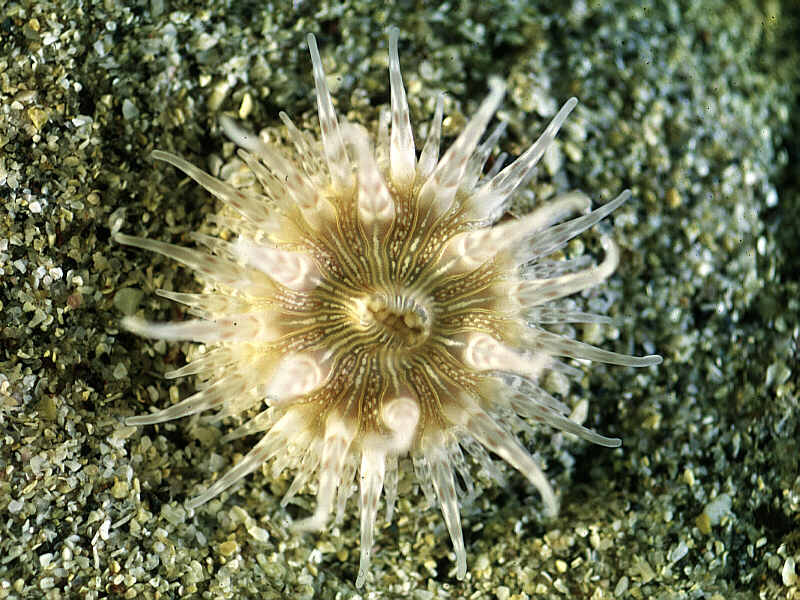| CNIDARIA : Actiniaria : Hormathiidae | SEA ANEMONES AND HYDROIDS |
Paraphellia expansa Haddon, 1886
 |
| Paraphellia expansa |
Description: This sea anemone has a very wide base, which is capable of firm adhesion but may be free. The column is conical, divided into scapus and scapulus, the scapus is usually covered with sand, sometimes with cuticle. The tentacles are moderate in length, arranged in multiples of six. Up to 60mm across base, span of tentacles to 30mm. The column is pale buff, disc and tentacles buff with a pattern of dark brown, gold and white.
Habitat: Lives buried in sand or gravel with the broad base unattached and acting as an anchor; sometimes attached to shells or stones. Exclusively sublittoral. Retracts very fast when disturbed.
Distribution: Occasional in English Channel, Irish Sea, and around southwest Ireland. Any new records would be welcomed.
Similar Species: Disc pattern fairly similar to Hormathia coronata and Cataphellia brodricii but these possess solid tubercles on the column which are lacking in Paraphellia.
Key Identification Features:
- Very wide base.
- Column often encrusted with sand.
Distribution Map from NBN: Paraphellia expansa at National Biodiversity Network mapping facility, data for UK.
iNaturalist: Paraphellia expansa at iNaturalist World Species Observations database.
GBIF data for Paraphellia expansa
WoRMS: Paraphellia expansa at World Register of Marine Species. Accepted name: Paraphellia expansa Haddon, 1886. AphiaID: 100961.
Classification: Biota; Animalia; Cnidaria; Anthozoa; Hexacorallia; Actiniaria; Enthemonae; Metridioidea; Hormathiidae; Paraphellia
| Previous species | Next species |
| Picton, B.E. & Morrow, C.C. (2024). Paraphellia expansa. Haddon, 1886. [In] Encyclopedia of Marine Life of Britain and Ireland. https://www2.habitas.org.uk/marbiop-ni/speciesaccounts.php?item=D12770. Accessed on 2025-04-04 |